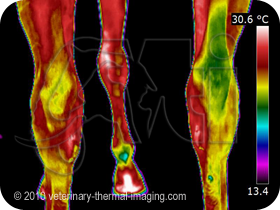 |
| Give your horse access to clean, ice-free water. credit |
There are several things you can do to encourage your horse to drink. If you live somewhere that gets below the freezing temperature during the day, you should break up the ice several times a day so the water doesn't completely freeze over. Better yet, if you have access to an immersion heater or electric teakettle, you can warm the water up just enough so it is not too chilling before giving it to your horse, which may encourage him to drink. Make sure the water is between 45 than 65 degrees Fahrenhiet, though, because horses tend not to drink water that is too cold or too warm.
Another trick is to feed your horse dry food, such as his meal of hay or grain, and let him eat a for a few minutes before refilling his water bucket. This causes his mouth to become dry, thus encouraging him drink water to relieve his thirst. Salt also makes a horse thirsty, so giving your horse access to a salt lick and lots of water may also encourage him to drink.
Mixing electrolytes into your horse's may also encourage your horse to drink more, or at the very least help to keep him hydrated.
Watch for signs of your horse being even just a little bit dehydrated. If his manure seems drier than normal, he may not be getting enough water and is probably dehydrated. Since dehydration means less saliva, a dehydrated horse may also eat less hay, grain, and other dry food because he can't produce enough saliva to chew it, thus causing him to lose a lot of weight and become sick. Probably the worst health issue caused by dehydration is impaction colic. Impaction colic, one of the worst kinds of colic, is caused by food becoming jammed in the intestines due to lack of moisture, a serious condition. The veterinarian should be called immediately.
Staying hydrated can keep your horse healthy and prevent illness caused by lack of water. Make sure your horse has access to fresh water all day so he remains hydrated and doesn't have to resort to eating snow, which is not an ideal subsitute for water. Hydration is important any time of the year, no matter how hot or cold it is.






































